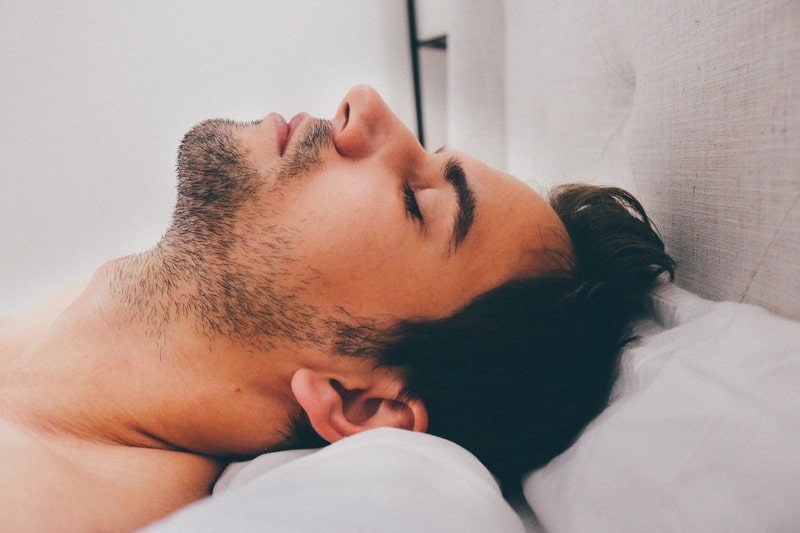
Two Case Studies Illustrate Dental Technology Success
According to the American Sleep Apnea Association, it is estimated that 22 million Americans suffer from obstructive sleep apnea, with 80 percent of moderate and severe cases undiagnosed. Those that are impacted with this condition are unable to get a consistent and fulfilling night’s sleep, which is an essential habit affecting one’s overall health and quality of life. If your patients are approaching you with complaints that their sleep habits are impacted by symptoms such as headaches, jaw stiffness, and shortness of breath, it may be time to get them tested for sleep apnea.
Historically speaking, common treatments for sleep apnea such as Continuous Positive Airway Pressure, or CPAP, have been viewed by the general public as uncomfortable and invasive. What many individuals looking for treatment do not know however, is that most sleep apnea patients can be treated effectively with oral appliance therapy.
Research has proven repeatedly that oral appliance therapy improves cognitive function[1], reduces the risk of cardiovascular mortality[2], and lowers blood pressure[3] in obstructive sleep apnea patients. And while it is great to read the stats in medical journals, it is even better to hear the joy, amazement, and raves directly from our patients.
At ProHEALTH Dental, our team works closely with sleep medicine physicians to treat patients who are diagnosed with mild or moderate apnea, as well as those who are intolerant of CPAP. Working together with our medical affiliates, our team annually screens patients for sleep apnea, and we have had great success in treating some of these patients together.
Case Study One | Patient Ken
*NOTE: All patient names have been changed to protect PHI
Situation: An otherwise healthy 66-year-old man, Ken complained of daytime sleepiness, snoring, and waking up gasping for breath. His wife of twenty years also worried about his health because she had seen him stop breathing so many times. I referred the patient to our clinical affiliate for a consultation, and a home sleep study confirmed obstructive sleep apnea. In fact, Ken had an AHI (apnea-hypopnea index) of 57, meaning Ken stopped breathing 57 times each hour while asleep.
Treatment: His AHI put him in the “severe” category of OSA and CPAP treatment was recommended. Ken opted for oral appliance therapy because he experienced claustrophobia and was unable to tolerate the CPAP mask. He also preferred a less intrusive treatment option.
Solution: After a full dental exam, I fitted Ken with a Somnomed Avant oral appliance. Over the next three follow-up visits, I titrated the device until optimal mandibular advancement was achieved. “I feel amazing,” was Ken’s first comment. He had stopped snoring, was enjoying more restful sleep, had increased energy, and even his wife was sleeping better! An efficacy sleep test taken while using the oral appliance showed Ken’s AHI had been reduced to 6 (just above normal).
In more mild cases, it may not take us much time to get the desired results we are looking for when it comes treating sleep apnea.
Case Study Two | Patient Steve
*NOTE: All patient names have been changed to protect PHI
Situation: Another patient, Steve presented with an AHI of 13 (mild sleep apnea) and shared complaints of morning headaches, jaw tension, and dry mouth upon waking. Because his apnea was mild, his sleep physician recommended oral appliance therapy as a first line of treatment and Steve agreed.
Treatment: After a complete exam and work-up, I prescribed the ProSomnus EVO for this patient, advanced his protrusion slightly over two follow up visits, and reached an AHI of 2 on his efficacy test.
Solution: The oral appliance had virtually eliminated this patient’s obstructive sleep apnea and Steve raved about how much better he feels during the day and that his concentration levels have greatly improved. He also noted that he “never dreamed” before the oral appliance, but now he was dreaming—a sign of deep REM sleep.
Both myself and the team at ProHEALTH Dental work tirelessly every single day to help patients just like Ken and Steve get a better night’s sleep. By breaking down the barriers between oral and systemic health care, patients can get faster and more effective treatment so they can live a higher quality life.
ABOUT THE AUTHOR:
Dr. Arthur Feigenbaum is the director of dental sleep medicine for ProHEALTH Dental, servicing 14 locations across New York and New Jersey. A Diplomate of the American Board of Dental Sleep Medicine, Dr. Feigenbaum has been in the field for more than ten years. He is a graduate of Tufts University School of Dental Medicine.
ABOUT PROHEALTH DENTAL:
Based in Lake Success, New York, ProHEALTH Dental affiliates with health systems and medical groups to coordinate dental services with primary care medical services and promote the oral and overall health and well-being of their patients. Their team nurtures partnerships with some of NY and NJ-area’s largest and most respected medical groups including ProHEALTH, Mount Sinai, WestMed, and Caremount Medical in NY, and Riverside Medical in NJ.Under these affiliation arrangements, ProHEALTH Dental develops state-of-the-art dental offices to provide both preventative and restorative dentistry, as well as all needed specialty services, for both children and adults. For more information about ProHEALTH Dental, please visit www.phdental.com.
REFERENCES
[1]Tegelberg A, Wilhelmsson B, Erixon-Lindroth N, Lindström LH. Improved cognitive functions after treatment with an oral appliance in obstructive sleep apnea. Nat Sci Sleep. 2012;4:89-96. Published 2012 Aug 22. doi:10.2147/NSS.S33849
[2]Anandam A, Patil M, Akinnusi M, Jaoude P, El-Solh AA. Cardiovascular mortality in obstructive sleep apnoea treated with continuous positive airway pressure or oral appliance: an observational study. Respirology. 2013 Nov;18(8):1184-90. doi: 10.1111/resp.12140. PMID: 23731062.
[3]Iftikhar IH, Hays ER, Iverson MA, Magalang UJ, Maas AK. Effect of oral appliances on blood pressure in obstructive sleep apnea: a systematic review and meta-analysis. J Clin Sleep Med. 2013;9(2):165-174. Published 2013 Feb 1. doi:10.5664/jcsm.2420
RELATED ARTICLES
ProHEALTH Dental Brings Integrated Care to New Jersey
The Importance of Treating the Whole Patient Through a Medical/Dental Integration Model











